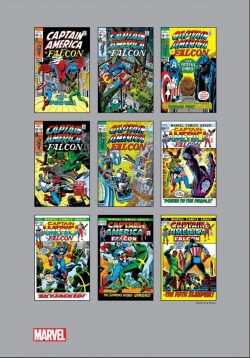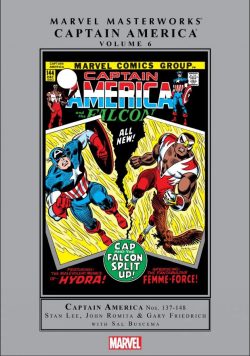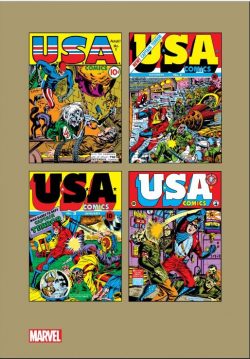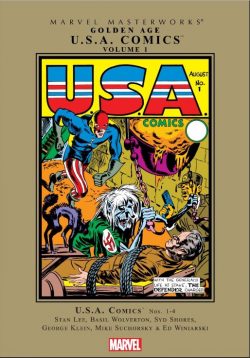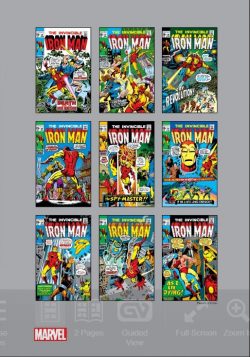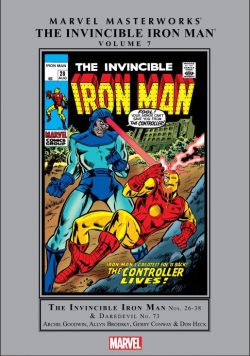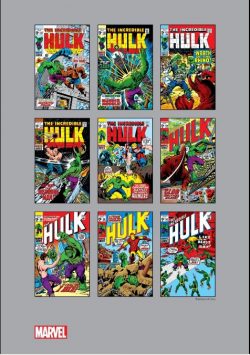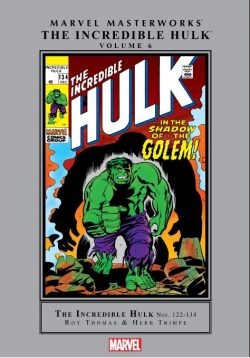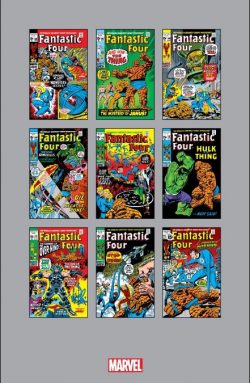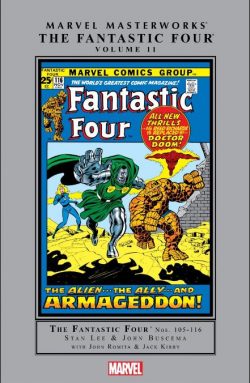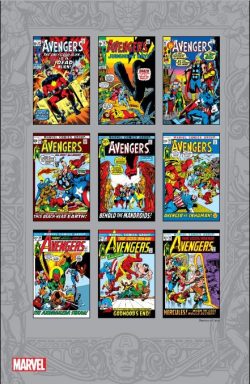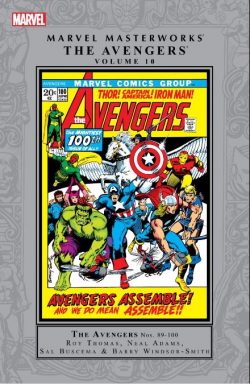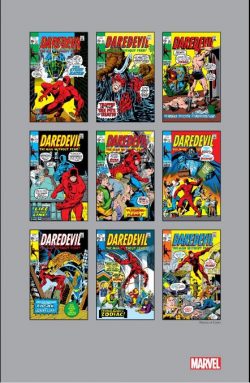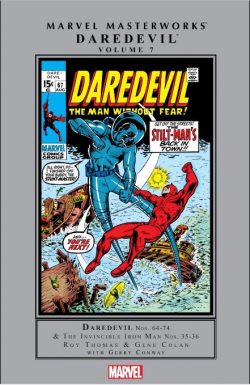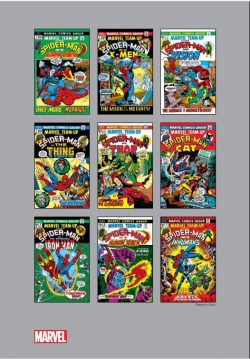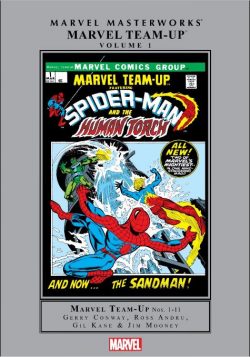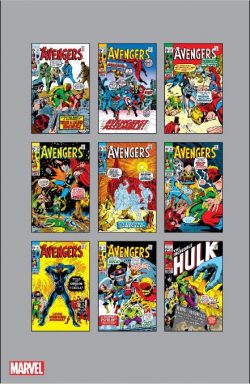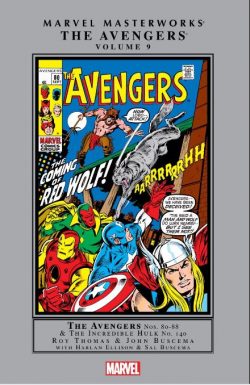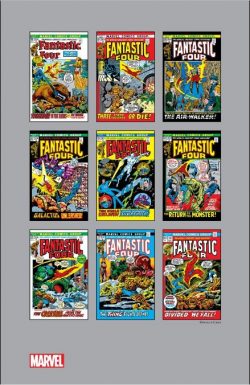
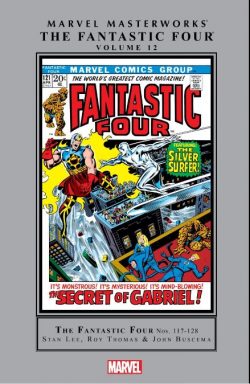
By Stan Lee, Archie Goodwin, Roy Thomas, John Buscema, Joe Sinnott & various (Marvel)
ISBN: 978-0-7851-4218-8 (HB)
Monolithic modern Marvel truly began with the adventures of a small super-team who were as much squabbling family as coolly capable costumed champions. Everything the company produces now is due to the quirky quartet and the groundbreaking, inspired efforts of Stan Lee and Jack Kirby…
This full-colour compendium – available in hardcover and digital editions – collects Fantastic Four #117-128: spanning December 1971 to November 1972 with Stan Lee surrendering the scripting chores whilst John Buscema and Joe Sinnott did their utmost to remake Jack Kirby’s stellar creation in their own style and image and outdoing themselves with every successive issue…
What You Should Already Know: maverick scientist Reed Richards, his fiancé Sue Storm, their close friend Ben Grimm and Sue’s teenaged tag-along little brother Johnny miraculously survived an ill-starred private space-shot after cosmic rays penetrated their stolen ship’s inadequate shielding. As they crashed back to Earth the uncanny radiation mutated them all in unimaginable ways…
Richards’ body became astoundingly elastic, Sue gained the power to turn invisible and project forcefields whilst Johnny could turn into living flame and tragic Ben devolved into a shambling, rocky freak. They agreed to use their abilities to benefit mankind and thus was born the Fantastic Four.
Following an effusive Preface from Lee and a candid, context-creating and fact-filled Introduction by Roy Thomas, the drama opens with the team in turmoil as usual. After saving the world (from the Over-mind) the heartsick Human Torch headed for the Himalayas and a long-delayed rapprochement with his lost girlfriend Crystal of the Uncanny Inhumans in FF #117.
Months previously she had been forced to leave civilisation because modern pollutants had poisoned her system, but when blazing mad Johnny Storm battled his way into her homeland in ‘The Flame and the Quest!’ (written by Archie Goodwin) he is horrified to discover that she had never arrived back in the Great Refuge of Attilan …
Flying way back to New York, Johnny consults part-time nanny and career-sorceress Agatha Harkness who tracks Crystal down in Central American dictatorship Terra Verde. Arriving there exhausted and expectant, Johnny finds his love is the mesmerised slave of arcane alchemist Diabolo.
The mystic has convinced the populace – and Crystal – that she is a reborn goddess and needs her to seize control in ‘Thunder in the Ruins!’ (inked by Jim Mooney). He would have succeeded too, if not for that flaming kid…
The issue also included an intriguing short piece starring the Thing in ‘What Mad World?’ (Goodwin, Buscema & Mooney) wherein the Tragic Titan is afforded a glimpse of an alternate Earth where an even greater mishap occurred after the fateful spaceflight which created the FF…
The Black Panther – cautiously renamed Black Leopard for contemporary political reasons – guest-starred in #119’s ‘Three Stood Together!’ as inker Sinnott returned and Roy Thomas scripted a damning – if shaded – indictment of South African apartheid.
When the heroic ruler of jungle wonderland Wakanda is interned in the white-ruled state of Rudyarda, Ben and Johnny fly in to bust him out and clash with old enemy Klaw who is attempting to steal a deadly new super-weapon…
Fantastic Four #120 heralded an extended and overlong epic by Stan Lee which began with ‘The Horror that Walks on Air!’ as a seemingly omnipotent invader claiming to be an angel scours the Earth and declares humanity doomed.
The tale laboriously continues in ‘The Mysterious Mind-Blowing Secret of Gabriel!’ with the recently reunited and utterly overmatched quartet saved by the late-arriving Silver Surfer before facing off against world-devouring ‘Galactus Unleashed’, before Reed again outsmarts the cosmic god to prevent the consumption of ‘This World Enslaved!’
Although beautifully illustrated, the hackneyed saga was a series low-point, but Lee was back on solid dramatic ground with #124’s ‘The Return of the Monster’ and concluding episode ‘The Monster’s Secret!’ wherein the mystery menace Reed had once dubbed ‘the Monster from the Lost Lagoon’ resurfaces to haunt a Manhattan hospital, steal drugs and kidnap Sue… but only for the best and most noble of reasons…
Roy Thomas assumed the role of writer/editor with #126, revisiting the classic origin and first clash (from FF #1) with the Mole Man in ‘The Way it Began!’ this was all mere prelude for what was to follow…
The reverie prompts the Thing to invade the sub-surface despot’s realm in search of a cure for the blindness which afflicts his girlfriend Alicia Masters in ‘Where the Sun Dares Not Shine!’ and all-too soon the embattled brute is embroiled in a three-way war between Mole Man, Kala, Empress of the Netherworld and immortal dictator Tyrannus.
When his comrades go after Ben they are duped into attacking him in ‘Death in a Dark and Lonely Place!’…
The narrative concluded for the moment, there follow four pages of pin-ups by Buscema & Sinnott highlighting ‘The Fabulous F.F.’s Friends… and Foes’, plus the Kirby & Vince Colletta cover to 1971’s all-reprint Fantastic Four Annual #9 to wrap up this morsel of Marvel magic.
Although Kirby had taken the explosive imagination and questing sense of wonder with him on his departure, the sheer range of beloved characters and concepts he had created with Lee served to carry the series for years afterwards. These admittedly erratic and inconsistent stories kept the team book ticking over until bolder hands could once again take the World’s Greatest Comics Magazine Heroes back to the stratospheric heights where they belonged.
Solid, honest and creditable efforts, these tales are probably best appreciated by dedicated superhero fans and continuity freaks like me, but they can still thrill and enthral the generous and forgiving casual browser looking for an undemanding slice of graphic narrative excitement.
© 1971, 1972, 2017 Marvel Characters, Inc. All rights reserved

